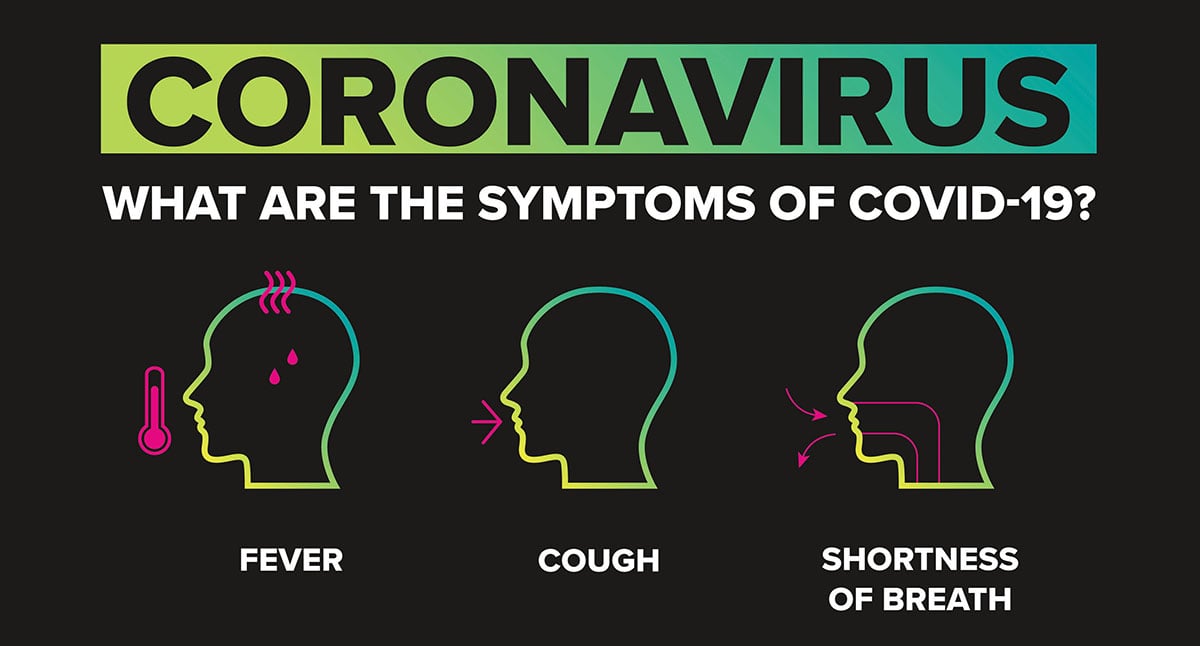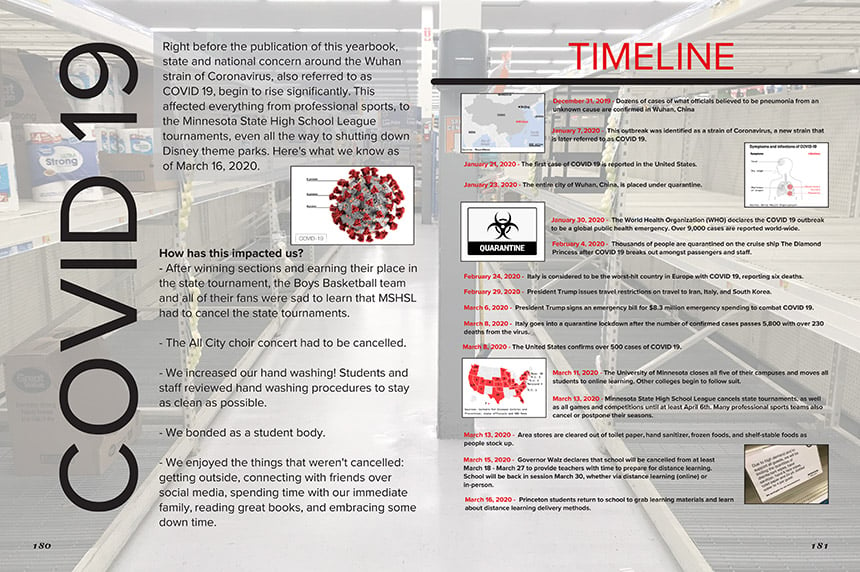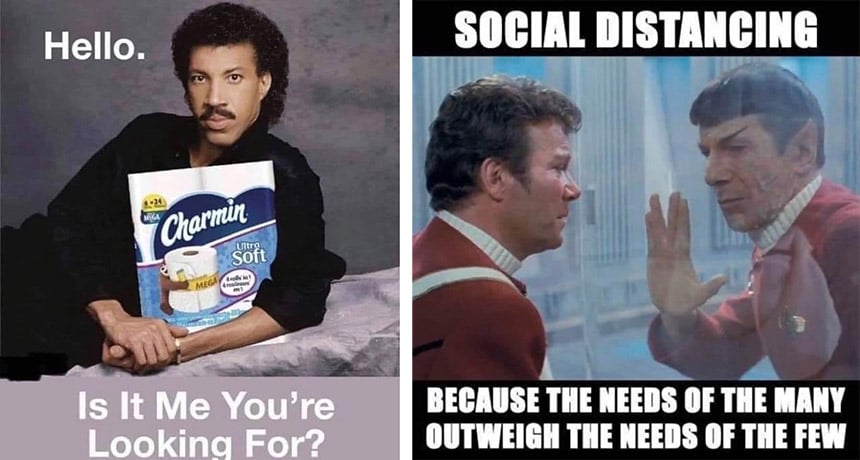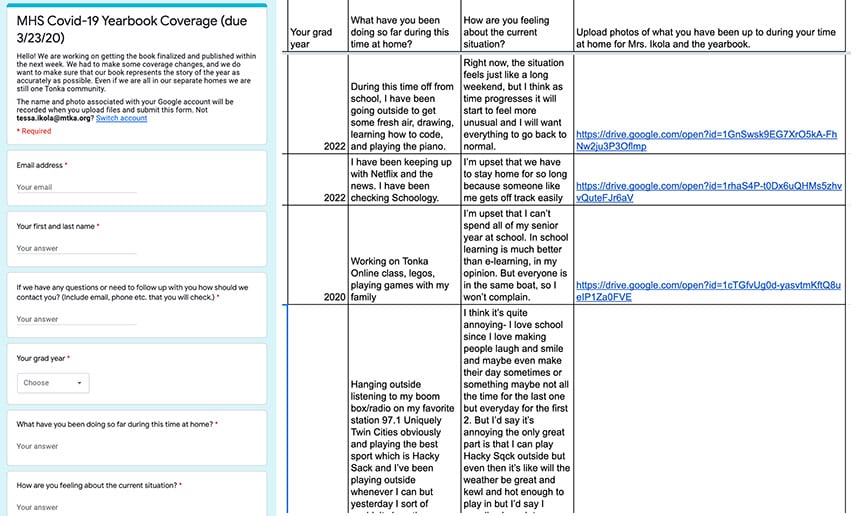
It's all we can talk about. It’s upended life as we know it. It’s a challenge to get in our yearbooks. With school closures and looming deadlines, here are six creative ways to include the coronavirus in your 2020 yearbook.
1. Overall coverage
Think about readers in 20 years. Provide an overall view of the outbreak; consider including a timeline of events, common symptoms, prevention steps and closures. Utilize the Centers for Disease Control and Prevention website for background information, statistics, prevention information and photos. (We’ve also created a database of royalty-free images and graphics to help with your coverage.)
Consider featuring a module focused on hand washing. Health organizations, doctors, the media and social media have strenuously pointed out it’s the best prevention method. Think about using the step-by-step graphic we created or taking your own photos. One potential angle is the 20-second guideline. Talk to students about their favorite songs to sing and which ones they are sick of.

For this spread made in Encore, Princeton High School used an empty shelves image for a background with their timeline of coronavirus-related events. They also included coverage of state events affecting their students.
Think about also creating spreads or modules focusing on other aspects of the pandemic—school closings, social distancing, cleaning supplies, grocery store shortages, etc. Empty shelf photos are a dramatic way to show Americans’ worries about running out of toilet paper and bottled water. Utilize social media and staffers’ personal connections to include quotes for a personal connection.
2. Coronavirus lingo
COVID-19. Social distancing. Quarantine. Uncharted waters. There’s a new lexicon for 2020 and it belongs in our books. Turn a mod or a whole spread into the most unprecedented slang coverage we’ve ever seen in a yearbook. Add examples from politicians and celebrities using the new phrases (there are no copyright issues with public speeches and interviews). Or have students weigh in on the words and the effect on their lives personally. Go crazy with your type to make it a graphic bonanza, using giant typography, bold colors and lots of weights (think thin, italic, bold).
3. Coronavirus memes
While we know COVID-19 is a serious issue, we can find humor in this unexpected and unprecedented situation. Cancellations, closures, remote learning and hoarding have made for light-hearted meme opportunities. Take the best ones (watch for inappropriate language!) and turn them into a module or a full double-page spread. (And yes, you’re good to use memes without copyright issues. Because of their satirical nature and viral popularity, their usage tends to be considered a “fair use.”)

4. Quarantine life
What are your students doing with all this extra time? Seek out photos and quotes via social media, Google forms and text messages.
On the Netflix front, find out what people are binge-watching and their go-to comfort movies. (In fascinating contrast, there’s been a dramatic rise in viewership of virus movies like Contagion and Outbreak. Similarly, apocalyptic and disaster films like Cloverfield, Warm Bodies and The Day After Tomorrow are spiking in popularity. Now, that’s a great story to tell.)
Share students’ thoughts and creative ways to keep from going stir crazy. Are they learning a new skill, reading more books, doing their homework? How are people utilizing the outdoors in these social distancing times? Consider a module for how students are dealing with siblings and parents in close quarters.
If you have students who contracted the virus or were required to self-isolate, talk to them about their experience. Share their story with a first-person feature or personal profile.

The Minnetonka High School yearbook staff is using Google forms to gather quotes and photos from their school community.
5. Reactions
The cancellations and closures have been tough on students and athletes, especially seniors. Consider dedicating coverage to this important and emotional topic. It could be a whole spread, focusing on students’ emotions and thoughts, or specific coverage on an already planned spread.
For example a baseball spread might have a module about the shortened season. A prom spread could feature quotes with a lone corsage (check our Hightail space for photos or purchase images at Adobe Stock which offers a free one-month trial). Another option is to ask girls who have already bought dresses to submit photos in their prom attire.
For senior year coverage, try a single image of a graduation cap or tassel (check Pixabay for royalty-free images or consult our Hightail space if you don’t have a gown to photograph). Talk to seniors about what it means to have their final year of high school interrupted, to miss out on traditional senior moments, to lose their final sports seasons. These are emotional stories that will carry a lot of weight and bring significance to a shortened year. Remember for these students, the yearbook will be one of the only tangible memories of their senior year.
As you plan reaction coverage, here are a few module headline and topic ideas:
- What it means to miss out
- Senior year, interrupted
- What do you miss most about school?
- What do you not miss?
- What will you appreciate more now?
- My quarantine in six words
- #stayathomechallenge
- What’s your go-to comfort food?
- What show are you binge watching?
- What are you sick of?
- How are you connecting with friends?
- Social distancing efforts
- The awkwardness of social greetings now
6. School closure ramifications
It wasn’t just classes affected by spring break extensions and school shutdowns. More than 30 million children receive free or reduced lunch, according to a 2016 NPR story. The National Center for Education Statistics reports 52 percent of students were eligible for free or reduced lunch for the 2015-16 school year.
To combat the problem, school districts across the country have begun providing free food to students. Consider adding these efforts as part of your coronavirus coverage, including a focus on the workers making the food possible. Be mindful of not embarrassing students who need to use the free service.
Classroom pets are another overlooked coverage area. The beta fish, hamsters and snakes need temporary homes while schools shutter their doors. Who’s handling that responsibility? If you’re not sure, reach out to the faculty population for information and photos.
Final thoughts
As you plan coverage, look to faculty, yearbook staffers and crowdsourcing for images and interviews. If you need to fill numerous blank spreads, consider using several of these ideas. If you’re short on space, turn any of these concepts into a module for already planned pages or the index.
If you’re short on time or quotes, do as much as you can and don’t stress about it too much. The coronavirus might be all we can think or talk about it right now, but this too, shall pass.

